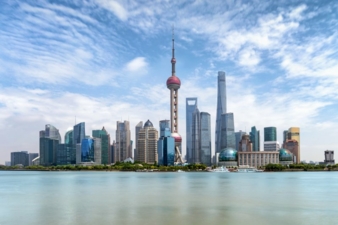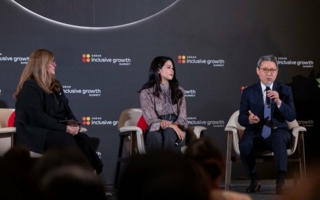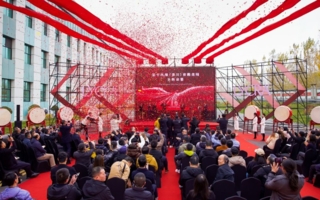13/09/2018 – China vs Africa — auf Deutsch lesen
Cheap was yesterday
A forecast by market researcher Euromonitor has revealed that China will be the biggest textiles and apparel market in the world in 2019.
Set against this backdrop, our New York correspondent Manik Mehta spoke with Zhang Tao, the Secretary General of the China Sub-Council of Textile Industry, about China’s transformation.
Looking back to the 1980s when China emerged as a major supplier to the world markets, all it had to offer were cheap textiles and cheap clothing. The low labour and production costs helped China advance to the world’s biggest supplier of textiles and apparel. Today, as wages and production costs continue to rise, the industry is drifting away to low-cost countries; at the same time, China is itself evolving into a huge market for high-quality textiles and clothing. According to forecasts by market researcher Euromonitor, China looks set to become the world’s biggest market for textiles and apparel in 2019, overtaking the USA for the first time.
Chinese spend less on clothing
The market value for apparel in China is estimated to reach US$ 333,312m in 2019. This corresponds to a 25 per cent climb against the 2014 total of US$ 267,360m. By comparison, US clothing sales have been pegged at an estimated US$ 267,360m for 2019, which represents just a 3 per cent increase on 2014.
It is important to note, however, that competition on the Chinese market is fiercer than in the US. In 2014, for example, no apparel brand in China had a market share of more than one per cent. This compares with US market shares of over 2 per cent for several leading clothing brands. At the same time, China’s domestic brands tend to have a better reputation than the international brands.
It is also worth mentioning that China’s per capita spending on clothing is considerably lower than in many developed countries. In 2014, Chinese consumers spent an average of US$ 240 on apparel, compared with US$ 815 for US consumers. Moreover, spending on clothes accounts for around 10% of people’s income in China, which is considerably more than the almost 3% for the USA.
During his interview with textile network, Zhang Tao, Secretary General of the China Sub-Council of Textile Industry, stated that the textile business had started to regain momentum. “Domestic demand is on the rise again. Everyone is talking about e-commerce, which is creating new opportunities for the industry. However, wage and raw material costs as well as electricity prices are constantly climbing. Many Chinese manufacturers are continuing to invest in South-East Asia and Africa. 10 or 15 years ago, our main strength was cheap production. China’s population is ageing and its economy is now twice the size it was 10 years ago. China’s textile industry is investing more than ever before in research and development so that it can assert itself on the global markets through innovation.”
China has thus shifted its focus to quality and value-adding attributes. Mr Tao commented: “The Chinese Government wants to encourage manufacturers to focus on improving quality and features that add value.”
Nevertheless, China’s total textile exports have been dwindling. According to Mr Tao, they slid to US$ 280bn in 2016, down 5% from US$ 292bn the year before. However, since early 2017, exports have been showing signs of recovery.
America first?
And what does he think of the “America First” slogan of US President Trump? “My answer is simple: are American consumers prepared to pay more for their products?”
The USA still ranks as the biggest market for Chinese textiles and apparel. “Our share of the American market has contracted from 38% to 37.4% in terms of volume. Having said that, demand on the European market is gaining momentum; European consumers generally spend more than American consumers on quality clothing,” stated Mr Tao.
The Chinese “Belt Road Initiative” (BRI) – also known as the “new Silk Road” – aims at strengthening the economies of the BRI member states. The project is expected to have an impact on the global textiles trade. “We’re hoping it will go some way to improving the living standards of the member countries whilst fuelling demand for clothing, textiles and other needs.”
China continues to support the Regional Cooperation and Economic Partnership (RCEP). At the same time, it is promoting e-commerce, not least because this state-of-the-art sales concept is spreading around the world. Mr Tao added: “We also have to change our attitude to new concepts … this is all the more important with the advance of digital printing and the increased use of robots etc. E-commerce has also become an important part of everyday life in China.”
And Africa?
Chinese manufacturers believe Africa offers many positive opportunities. The African Continent is seen not only as an attractive production location but also as a lucrative market for the future. “In ten or 15 years’ time, Africans will be buying more than today. Africa is currently considered a cheap production location for textiles and apparel. 30 years ago, China was in the same position, regarded as no more than a (cheap) production location. Today, it is considered an attractive market. We expect the same to occur in Africa in years to come,” stated the Secretary General.
In the fashion sector, China is currently facing the challenge of attracting new workers to the apparel industry. Employment as a seamstress is less appealing to the younger generation than it was in the past. China is still the world’s biggest exporter of clothing, having clinched a 38% share of the global market. Relocating China’s apparel industry to low-wage countries such as Bangladesh, Laos, Vietnam and now also Africa, therefore, appears to be the next best solution. Mr Tao concluded: “We will see growing involvement of Chinese companies in low-wage countries in the future. I expect Chinese producers to continue shifting their production operations to new locations.”





